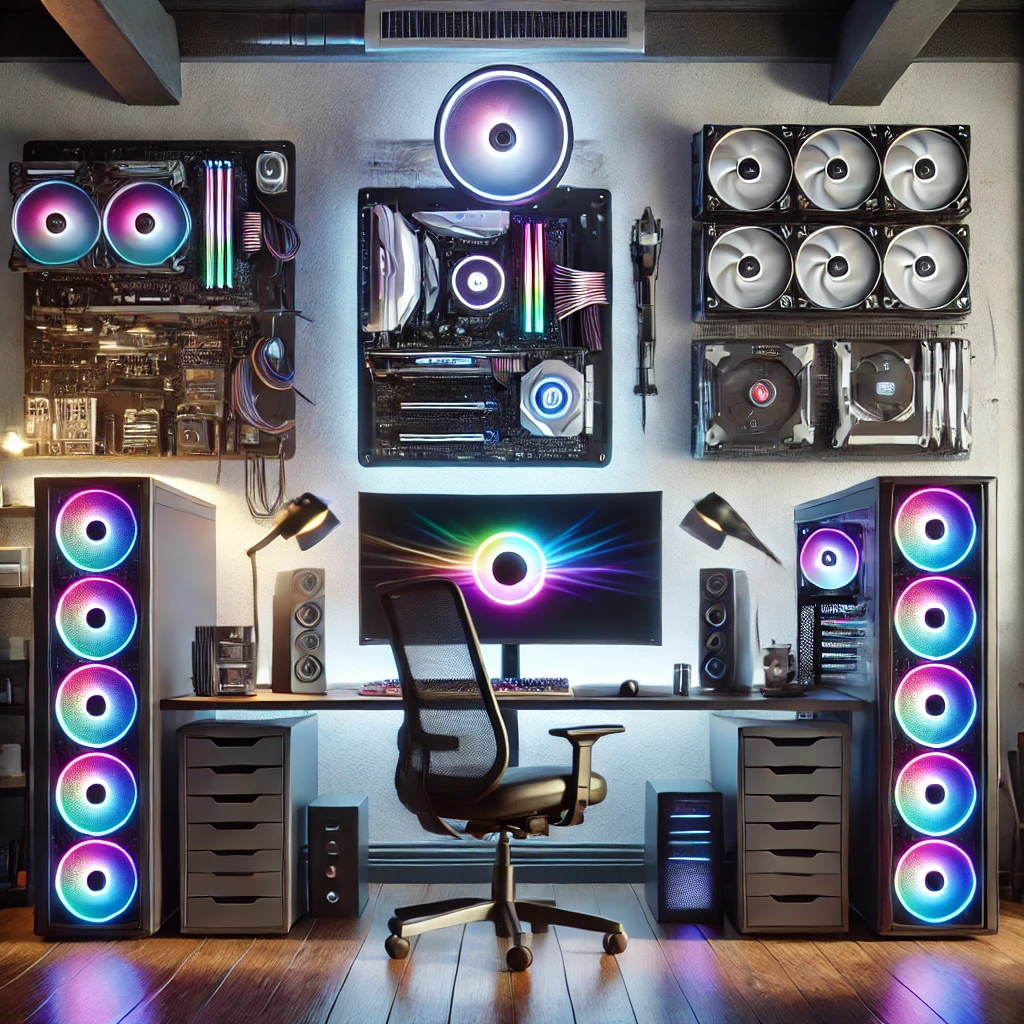Learn how to build a custom PC tailored for AI and machine learning with this step-by-step guide. Optimize your setup for maximum performance and efficiency.
Artificial intelligence (AI) and machine learning (ML) demand powerful computing hardware to handle intensive tasks like data processing, model training, and neural network simulations. Building a custom PC specifically designed for AI and ML applications is not only rewarding but also allows for the flexibility to upgrade as new technology emerges. This guide will walk you through the key components and steps to build a custom PC optimized for AI and machine learning.
1. Choose the Right Processor (CPU)
The CPU is the heart of your custom PC, handling basic computations and coordinating the other hardware components. For AI and ML workloads, a powerful multi-core processor is essential.
- Recommended Options: Intel Core i9, AMD Ryzen 9, or AMD Threadripper processors. These CPUs offer high core counts and thread processing, making them well-suited for handling multiple tasks simultaneously.
2. Invest in a High-End Graphics Card (GPU)
A high-performance graphics processing unit (GPU) is critical for AI and ML because it accelerates computations, particularly when training machine learning models. GPUs are ideal for parallel processing, which is crucial for data-intensive AI tasks.
- Recommended Options: NVIDIA’s RTX 30 or 40 series GPUs, such as the RTX 3090 or 4090, are widely considered the best for AI tasks due to their large memory, Tensor cores, and CUDA compatibility.
- Alternative: For users on a budget, the NVIDIA RTX 3060 or 3070 still offer strong performance at a more affordable price point.
3. Prioritize Memory (RAM)
AI and machine learning tasks are memory-intensive, especially when working with large datasets. For most projects, you’ll need at least 32GB of RAM, though 64GB or more is recommended for more complex tasks.
- Recommended RAM: Opt for high-speed DDR4 or DDR5 RAM with at least 3200MHz speed to ensure smooth operations. Brands like Corsair, G.Skill, and Kingston offer reliable options.
4. Opt for Solid-State Storage (SSD)
Storage speed is another key factor for AI and ML workloads. Traditional hard drives (HDDs) simply can’t keep up with the data throughput required for these tasks. Choose a solid-state drive (SSD) for faster data read/write speeds.
- Recommended Storage: NVMe M.2 SSDs are the fastest and most reliable options, with capacities starting at 1TB. If you handle extremely large datasets, consider a 2TB or larger SSD, paired with an external HDD for backups and additional storage.
5. Cooling and Power Supply
AI and ML tasks put significant strain on your hardware, generating a lot of heat. To maintain performance and prevent overheating, an efficient cooling system is essential.
- Cooling Options: Liquid cooling systems, like Corsair Hydro Series or NZXT Kraken, offer excellent heat dissipation. If you prefer air cooling, go for high-performance models like Noctua NH-D15 or Cooler Master Hyper 212.
- Power Supply: Make sure to select a power supply unit (PSU) with enough wattage to support your components. A PSU with 850W to 1000W is recommended for a high-end build with a powerful GPU.
6. Select a Suitable Motherboard
The motherboard should support the CPU, GPU, and the amount of RAM you plan to use. For AI and ML builds, look for motherboards that support PCIe 4.0 or PCIe 5.0 for optimal GPU performance.
- Recommended Motherboards: Options like the ASUS ROG Strix or MSI MEG X570 are known for their durability and feature-rich designs, making them ideal for high-performance builds.
7. Assemble and Test Your Build
Once you’ve gathered all your components, it’s time to assemble the PC. Here are the basic steps:
- Install the CPU onto the motherboard.
- Install the RAM into the appropriate slots.
- Mount the motherboard into the PC case.
- Install the GPU into the PCIe slot.
- Connect storage (SSD) to the motherboard.
- Install the power supply and connect it to all the components.
- Set up the cooling system (air or liquid cooling).
- Double-check cable connections and secure all components.
Once assembled, boot up the system and test it using benchmarking tools like Geekbench or Cinebench to ensure optimal performance.
8. Install the Right Software
Now that your custom PC is up and running, it’s time to install the software needed for AI and ML tasks. Popular machine learning libraries include:
- TensorFlow: An open-source library that is widely used for training neural networks.
- PyTorch: Another open-source framework that is growing in popularity for its flexibility and speed.
- CUDA: NVIDIA’s parallel computing platform and programming model that allows your GPU to work more efficiently with AI/ML workloads.
Conclusion
Building a custom PC for AI and machine learning applications allows you to tailor your system for the performance and flexibility these tasks require. By carefully selecting each component—from a high-performance CPU to a powerful GPU, and fast storage—you can optimize your PC for even the most demanding AI workloads. Whether you’re working on personal projects or scaling up for enterprise applications, having a well-built custom PC will significantly improve your AI and ML development experience.

